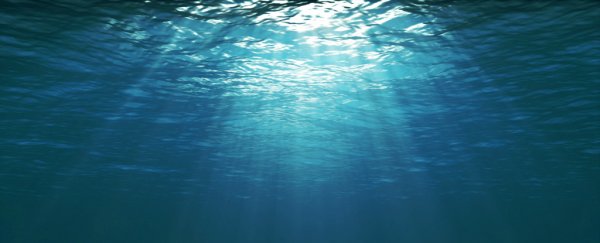An extensive and rigorous study of the Arctic seafloor has improved our understanding of life at the deepest, darkest depths.
The floor of the Central Arctic is one of the least studied ocean areas in the world. Still, that doesn't mean there's nothing down there of interest.
While many people assume that not much life can survive these frigid climates, that's actually not true.
On the contrary, the seafloor of the Arctic Ocean is teeming with life.
The creatures that live here are called benthos, and they include things like sea cucumbers, sea stars, snails, clams, bristle worms, and, sometimes, even crabs.
In 1935, the first evidence of deep-sea fauna in the Central Arctic was discovered, but decades later, there was still very little information on the diversity or distribution of these creatures.
A new study, led by the Max Planck Institute for Marine Microbiology, set out to change this.
Analysing the data from old ocean floor surveys as well as 37 new samples from recent expeditions, the researchers found that life on the Arctic floor arranges itself in remarkably similar ways to areas with warmer water.
The study identified five different groups of benthic communities. These groups included creatures that lived on the outer shelf, the upper slope, the lower slope, the mid-slope and the abyssal plane, which is the deepest part.
The dominant species for each of these depths tended to differ. Closer to the surface, for example, the researchers found a dominance of bivalves and marine worms.
As you get deeper, the diversity of species rose and then fell as depth increased - showing a more parabolic pattern, peaking at mid-range depths and then falling again at the deepest depths.
In the deepest parts of the Central Arctic - the appropriately named abyssal plane, which is 4 kilometres (2.5 miles) below the surface - the biodiversity of life was at its sparsest.
This is most likely because the long winters and extensive ice cover cannot sustain an abundance of life - there just isn't enough food or sunlight.
Despite their vast differences, this same pattern is seen in more temperate waters. Except, in the Arctic, the rate of species decline with depth was found to be even greater than in warmer waters.
The research, however, is about more than just mapping life in an unexplored region of the world.
Nowadays, climate change and sea ice decline is rapidly changing the Arctic ecosystem. Without a base knowledge of the region, scientists won't have a reference point for how the deepest macrofauna have been affected by global warming.
Previous studies have shown that in the Central Arctic, food supply drops off not just because of the increasing depth, but also because Arctic sea-ice limits how much light can get through.
These studies have also shown that there are more benthic communities when there is thinner, seasonal ice. And today, thanks to global warming, about 70 percent of the Arctic's sea-ice cover consists of this ice.
It remains to be seen what will happen to these ecosystems in the future.
"Temporal changes caused by thinning and retreating sea ice, which could potentially enhance primary productivity and export fluxes, are currently impossible to ground-truth given the lack of data for the Arctic Ocean deep seafloor," the authors conclude.
The study has been published in PLOS ONE.
